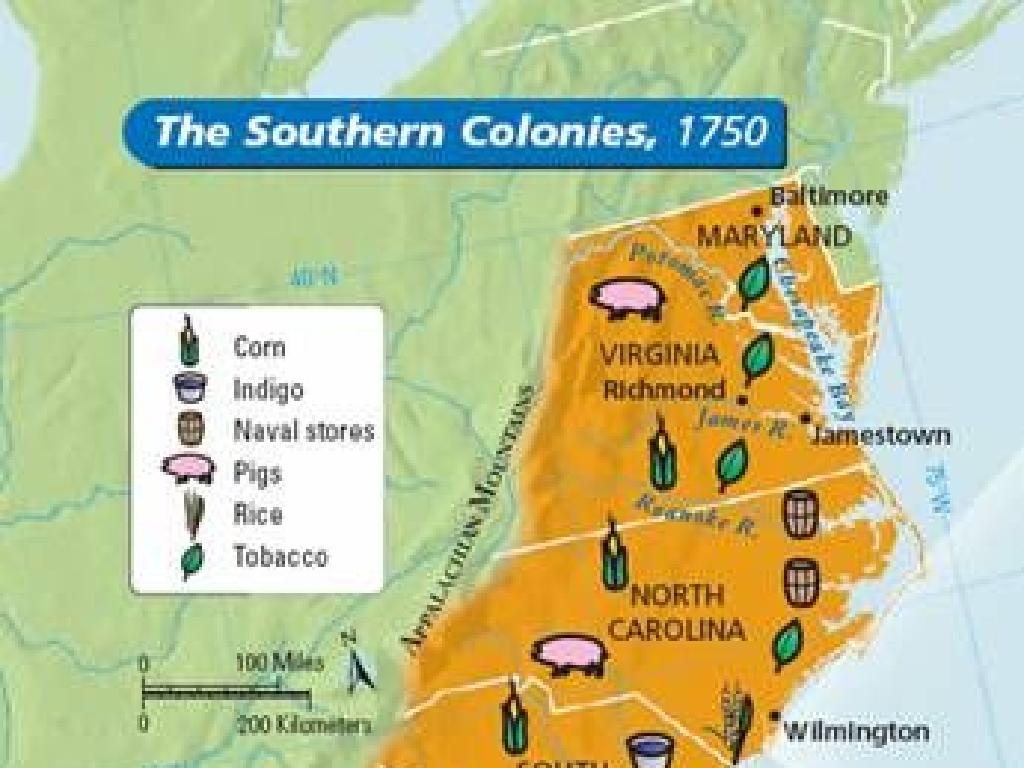Select Parts Of Water Cycle Diagrams
Subject: Science
Grade: Eighth grade
Topic: Water Cycle
Please LOG IN to download the presentation. Access is available to registered users only.
View More Content
Welcome to the Water Cycle!
– Explore water’s journey on Earth
– Follow a drop through evaporation, condensation, precipitation, and collection
– Significance of the water cycle
– The cycle provides fresh water, regulates climate
– Components of the water cycle
– Evaporation, condensation, precipitation, surface runoff, and groundwater
– Objectives of today’s lesson
|
This slide introduces students to the water cycle, emphasizing its continuous movement and the role it plays in sustaining life. Begin by explaining how water travels from the surface to the atmosphere and back again, touching on each stage of the cycle. Highlight the importance of the water cycle in providing fresh water and maintaining the Earth’s climate. Outline the main components that will be covered in detail during the lesson: evaporation, condensation, precipitation, surface runoff, and groundwater. Set clear learning objectives for the class to ensure students understand what they will learn and why it matters.
Exploring the Water Cycle
– Define the Water Cycle
– The Earth’s natural process of water circulation from land to the atmosphere and back.
– Water’s continuous journey
– Water moves on, above, and below Earth’s surface in an endless loop.
– The Sun’s role in the cycle
– Solar energy powers the evaporation and movement of water.
– Importance for Earth’s climate
|
The water cycle, also known as the hydrologic cycle, is the continuous movement of water within the Earth and the atmosphere. It is a complex system that sustains life by providing fresh water for plants, animals, and humans. The Sun’s energy is crucial as it heats water in oceans and seas, causing it to evaporate. This water vapor then cools, condenses into clouds, and returns to the surface as precipitation. The cycle is a critical component of Earth’s climate system and helps regulate temperature and weather patterns. Understanding the water cycle is fundamental for students as it connects to various aspects of Earth and environmental sciences.
Stages of the Water Cycle
– Evaporation: Water to vapor
– Heat from the sun transforms water from rivers, lakes into vapor.
– Condensation: Vapor to clouds
– Water vapor cools down to form clouds in the sky.
– Precipitation: Water returns
– Clouds release water as rain, snow, or sleet, depending on the temperature.
– Collection: Water accumulates
– Water collects in oceans, rivers, lakes, and even underground.
|
This slide outlines the four main stages of the water cycle, which is a continuous process that recycles Earth’s water supply. Evaporation is the process where water is heated by the sun and turns into vapor, rising into the atmosphere. Condensation occurs when this vapor cools and forms clouds. Precipitation happens when these clouds become heavy and water falls back to Earth in various forms like rain or snow. Finally, collection is where water gathers back into bodies of water, completing the cycle. It’s important for students to understand that this cycle is crucial for sustaining life on Earth, as it distributes fresh water across the planet.
The Water Cycle: Evaporation
– Sun’s heat causes evaporation
– Heat turns liquid water into water vapor
– Water bodies: oceans, lakes, rivers
– Largest source of atmospheric moisture
– Transpiration in plants
– Plants release water vapor during photosynthesis
– Evaporation’s role in the water cycle
|
This slide focuses on evaporation, a key process in the water cycle. Evaporation occurs when the sun’s heat energy causes water from oceans, lakes, and rivers to transform from liquid to gas. Transpiration, a similar process, occurs in plants when they release water vapor into the air during photosynthesis. Together, these processes contribute significantly to the atmospheric moisture, which eventually forms clouds and precipitation. It’s important for students to understand that evaporation is a continuous process and is responsible for the movement of water from the Earth’s surface into the atmosphere. Encourage students to think about how these processes affect weather and climate.
The Water Cycle: Condensation
– Cooling of water vapor
– Water vapor cools and changes back into liquid form, creating clouds.
– Cloud formation process
– Clouds are visible collections of tiny water droplets or ice crystals.
– Condensation in daily life
– Dew on grass, foggy mirrors after a hot shower.
|
Condensation is a key process in the water cycle where water vapor in the air cools and changes back into liquid form. This slide will explain how the cooling of water vapor leads to the formation of clouds, which are made up of millions of tiny water droplets or ice crystals suspended in the atmosphere. Students should understand that condensation is not only a phenomenon that occurs in the sky but also one that they encounter in everyday life, such as the dew they see on grass in the morning or the fog that appears on mirrors after a hot shower. Encourage students to think of other examples of condensation they have observed and to consider the conditions that lead to its occurrence.
Understanding Precipitation in the Water Cycle
– Forms of precipitation: rain, snow, sleet, hail
– Precipitation occurs in various forms depending on temperature and atmospheric conditions.
– Clouds and water weight
– Clouds can only hold a certain amount of water before it falls as precipitation.
– Gravity’s role in precipitation
– Gravity pulls water droplets down to Earth’s surface as precipitation.
– Precipitation’s impact on the ecosystem
|
This slide aims to explain the concept of precipitation, a crucial part of the water cycle. Students should understand that precipitation comes in various forms, including rain, snow, sleet, and hail, which are determined by the temperature and atmospheric conditions at the time. Discuss how clouds, made up of tiny water droplets, eventually become too heavy to hold more water, leading to precipitation. Emphasize the role of gravity in pulling these droplets down to the surface, resulting in rain or other forms of precipitation. Highlight the importance of precipitation in providing fresh water to Earth’s ecosystems, replenishing lakes, rivers, and groundwater. Encourage students to think about how precipitation affects their daily lives and the environment.
Collection in the Water Cycle
– Journey of precipitated water
– After precipitation, water collects in rivers, lakes, and oceans.
– Groundwater and aquifers explained
– Groundwater is stored in aquifers, replenishing our water supply.
– Significance of water bodies
– Oceans, lakes, and rivers are integral to the water cycle, providing habitats and supporting ecosystems.
– Collection’s role in the cycle
– Collection is the process where water accumulates, completing the cycle and starting it anew.
|
This slide focuses on the collection phase of the water cycle. Students should understand that after precipitation, water doesn’t just disappear; it travels to various places, including water bodies like rivers and oceans. Groundwater and aquifers act as underground reservoirs that store this water. Emphasize the importance of these water bodies in supporting life and maintaining the water cycle. Discuss how the collection process is crucial as it ensures the continuity of the water cycle, which is vital for sustaining life on Earth. Encourage students to think about how human activities can impact this delicate balance.
The Water Cycle’s Impact on Weather
– Water cycle’s role in climate
– Evaporation & precipitation regulate temperatures, affecting climate.
– Linking water cycle & weather
– The cycle’s stages contribute to the type of weather we observe.
– Effects on local weather patterns
– Variations in the cycle influence rainfall, droughts, and snowfall.
– Predicting weather using the cycle
|
This slide aims to explain the significant role the water cycle plays in determining climate and weather patterns. Students should understand how evaporation and precipitation contribute to regulating temperatures, which in turn affects the broader climate. The connection between the water cycle and daily weather occurrences is crucial, as it helps explain why certain areas experience particular weather events, such as heavy rainfall or drought. Emphasize the importance of each stage of the water cycle in contributing to these patterns. Encourage students to think about how changes in the water cycle might affect weather predictions and local climate variations. Provide examples of how meteorologists use knowledge of the water cycle to predict weather and discuss the implications of disruptions in the cycle due to environmental changes.
Human Impact on the Water Cycle
– Effects of pollution on water cycle
– Contaminants alter evaporation and harm ecosystems.
– Water conservation methods
– Rain barrels, efficient appliances, and plant choices.
– Role of communities in water protection
– Local clean-ups and sustainable policies.
– Impact of individual actions
– Reducing waste, mindful consumption, and advocacy.
|
This slide aims to educate students on the significant impact human activities have on the water cycle. Pollution, such as industrial waste and agricultural runoff, can disrupt the natural cycle, affecting evaporation and harming wildlife. Conservation efforts are crucial in mitigating these effects, including the use of rain barrels to collect rainwater, choosing water-efficient appliances, and selecting native plants that require less water. Emphasize the importance of community involvement in protecting water resources through activities like local clean-ups and advocating for sustainable policies. Lastly, discuss how individual actions, such as reducing plastic waste and being mindful of water usage, can collectively make a substantial difference. Encourage students to think of ways they can contribute to water conservation in their daily lives.
Class Activity: Exploring the Water Cycle
– Identify water cycle components
– Label parts like evaporation, condensation, precipitation, collection
– Discuss each part’s role
– Why is evaporation crucial? How does precipitation occur?
– Create a personal water cycle diagram
– Use colors and labels to illustrate the cycle’s stages
|
This activity is designed to help students understand the water cycle by identifying and labeling its various parts on a diagram. Begin by providing a brief overview of the water cycle’s components. Then, facilitate a classroom discussion on the role of each part, ensuring students grasp concepts like evaporation, condensation, precipitation, and collection. After the discussion, instruct students to create their own water cycle diagrams, incorporating labels and color-coding to represent different processes. This hands-on activity will reinforce their understanding and provide a visual aid for their learning. Possible variations of the activity could include creating a 3D model, a poster presentation, or even a digital animation of the water cycle.
Water Cycle: Conclusion & Recap
– Recap the water cycle stages
– Evaporation, condensation, precipitation, and collection
– Significance of each stage
– Each stage is crucial for sustaining ecosystems
– Engage in Q&A session
– Clarify doubts and explore concepts further
|
As we conclude our lesson on the water cycle, it’s important to review the key stages: evaporation, where water turns into vapor; condensation, where vapor forms clouds; precipitation, where water falls back to Earth; and collection, where it gathers in bodies of water. Emphasize the importance of each stage in maintaining ecological balance and supporting life. The Q&A session will allow students to ask questions and clarify any uncertainties they may have. Encourage them to think critically about how each stage of the water cycle affects the environment and human activities. Prepare to answer common questions and possibly extend the discussion to the impact of human actions on the water cycle.
Homework: 3D Water Cycle Model
– Construct a 3D water cycle model
– Label each water cycle stage
– Include ‘Evaporation’, ‘Condensation’, ‘Precipitation’, ‘Collection’
– Add descriptions for stages
– Explain processes like ‘Evaporation is water turning into vapor’
– Present your model in class
|
Students are tasked with creating a 3D model of the water cycle to deepen their understanding of its stages. They should label each part of the cycle, including evaporation, condensation, precipitation, and collection. Descriptions should detail the processes occurring at each stage, such as how evaporation involves water turning into vapor due to the sun’s heat. This hands-on assignment will help students visualize and explain the water cycle’s continuous flow. In the next class, students will present their models, discussing the significance of each stage. Encourage creativity in their models and clarity in their presentations.






